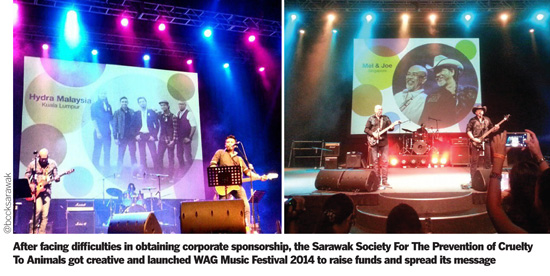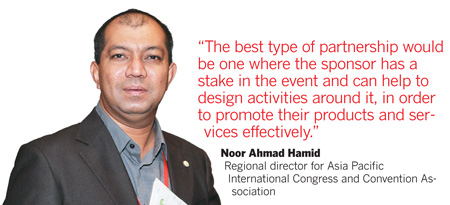
Sponsorships are even harder to come by these days, but associations will see greater success by having innovative activities and investing time and effort in building a relationship with sponsors, writes S Puvaneswary
The tough economic environment today and a greater focus on measuring and achieving return on investment have made securing sponsorships an even steeper challenge for many associations. Some are lamenting that it is harder to obtain support today than during the last global financial crisis.
Manoj Verman, president of the Indian National Group of International Society for Rock Mechanics, has observed how event sponsorship is losing its appeal among companies.
“There are other avenues of marketing that are opening up, created by the Internet,” said Verman.
And as conferences evolve to become more web-based and traditional ones see a reduction in live attendance, Verman predicts that courting sponsors will become even more arduous.
Tiani Bradilovic, Melbourne-based conference and event organiser with the Association of Corporate Counsel, said: “Organisations have tighter budgets and they are now demanding more for less. They want us to work for them and bring business to their doorstep whereas our arrangement was to give them access to our members. While they value what we can offer them, they are not prepared to pay for it.”
Speaking from experience, Philippine Council for the Advancement of Association Executives (PCAAE) president and CEO, Octavio Peralta, said new associations such as his, find it even more difficult to get sponsors as compared with established associations.
He said: ‘We have to build our credibility first and then look for sponsors that match our objectives.”
PCAAE’s inaugural 2015 Association Executive Summit in Manila on December 3 and 4 last year was fortunate to have received support from the Philippine Tourism Promotions Board and the Philippine International Convention Center. The former provided grants for PCAAE to hold events while the latter provided the venue.
Sponsors are also becoming more selective of the events they wish to sponsor, remarked Jose Cambler, project manager at Meeting Planner System in Spain. He shared that most sponsors want to participate in congresses because they seek brand recognition and brand recall, but decline other activities.
Gracie Geikie, director/ principal consultant of Planet Borneo Group of companies based in Sarawak, noted that animal welfare projects tend to get less attention from sponsors.
She elaborated: “Seeking grants and sponsorships for SSPCA (the Sarawak Society For The Prevention Of Cruelty To Animals) can be difficult because most organisations have budget only for corporate social responsibility programmes which are people related.”
To overcome this obstacle, Geikie used her experience in planning conferences and events to devise out-of-the-box solutions to raise funds for a SSPCA shelter and a proposed new animal village.
“While we still and will always need corporate sponsors, the strategy of creating public events such as a half-marathon, a fun race and a music festival has helped open some doors. It produced a new platform for organisations to support the events, which indirectly supported our cause,” she said.
SSPCA has so far organised the WAG Music Festival, a concert featuring musicians from around the world who chose to perform for free, and the third Animazing Race which welcomed more than 1,000 runners.
But the one event that truly helped SSPCA achieve its objectives and “opened the eyes of several hundred delegates” who stepped up to be ambassadors for its cause, was the Asia for Animals Conference which the organisation had successfully bid for.
Describing the conference as both a challenge and reward for SSPCA, Geikie said it was the first animal and animal welfare conference ever to be held in Malaysia. It took place over a week in October 2015.
Besides considering innovative ways to draw grants and support, association experts recommend investing time and effort to build a relationship with potential and existing sponsors.
Simon Pryor, CEO of the Mathematical Association of Victoria, said it takes time to get a new sponsor, thus associations should build a relationship with sponsors and treat them as their long term “partners”.
He also advised associations to implement a sponsorship policy that looks at the type of sponsors they wish to court for their events. While it is easy to identify sponsors that are a good fit, associations should also target sponsors that seem incongruent as there are companies that will want to come onboard merely to be identified with other big name brands.
International Congress and Convention Association (ICCA) regional director for Asia Pacific, Noor Ahmad Hamid, underscored the importance of keeping existing sponsors happy and urged associations to find ways to offer added exposure and value to sponsors.
He said: “The best type of partnership would be one where the sponsor has a stake in the event and can help to design activities around it, in order to promote their products and services effectively. In this regard, the association would need to have the flexibility to customise the event based on the sponsors’ input.”
Peralta agrees, saying: “It makes more sense to work for a long-term relationship with sponsors and come out with packages, such as a one-year partnership, rather than getting sponsors for individual events.”






















